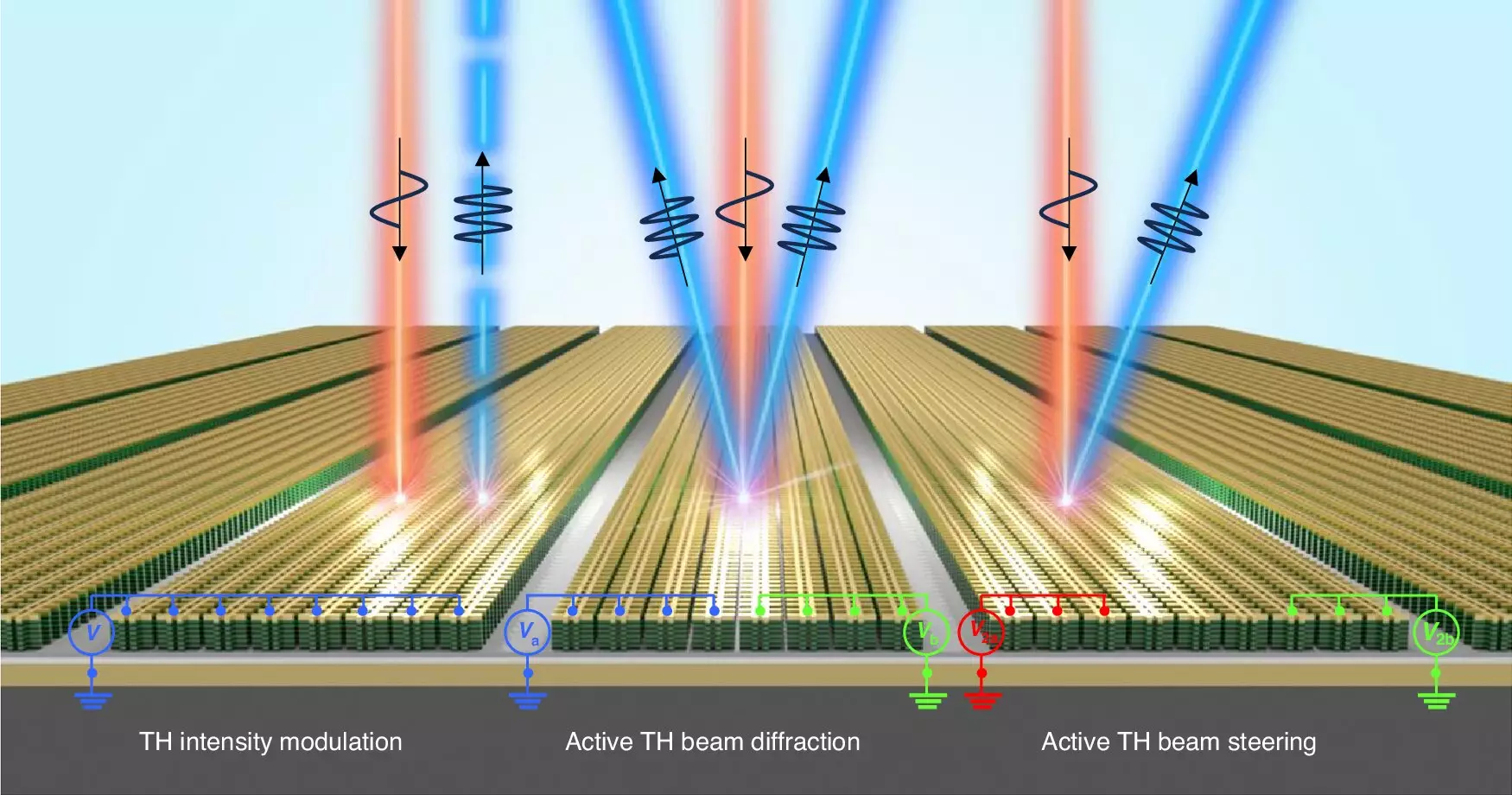Recent advances in nonlinear optics are paving the way for unprecedented developments in communication technology and medical diagnostics. Researchers have successfully engineered a new optical metasurface technology that operates with features smaller than the wavelength of light, promising substantial improvements over existing systems. This breakthrough is not only a scientific marvel but also a potential game changer for various applications, ranging from quantum light sources to advanced diagnostic instruments in healthcare.
The recent publication led by Professor Jongwon Lee from UNIST highlights an impressive achievement in the realm of third-harmonic generation (THG). By integrating an intersubband polaritonic metasurface with multiple quantum wells (MQWs), the team was able to demonstrate experimental implementations that exhibit a modulation depth of 450%. Furthermore, they achieved an astonishing 86% suppression of zero-order THG diffraction. These advances signify a remarkable leap towards the potential realization of electrically tunable nonlinear optical elements.
What sets this work apart is not only the output but also the enhanced control it offers. For the first time, researchers have achieved local phase tuning exceeding 180 degrees and executed THG beam steering, which allows for dynamic and precise manipulation of light beams. Such advancements suggest that the new metasurface technology can be utilized to develop flat, adjustable optical devices that are both compact and efficient.
Implications for Nonlinear Optics
The field of nonlinear optics explores the interactions between light and materials, facilitating the generation of multiple wavelengths from a single light source. This holds great promise for enhancing data transmission, a critical aspect of modern communication systems. An everyday example of nonlinear optics is the widely recognized green laser pointer, which exemplifies the potential of manipulating wavelengths for various applications.
The innovations stemming from Professor Lee’s research allow for the creation of ultra-thin laser devices, possibly as thin as a sheet of paper. These new developments aim to overcome previous limitations in electrical control, making tuning more accessible and practical.
The ability to control second-harmonic generation (SHG) through voltage, as demonstrated by the research team, offers exciting possibilities for the functional expansion of nonlinear optical devices. The ability to independently modulate the intensity and phase of light opens new doors for applications in cryptography, dynamic holography, and next-generation quantum sensors. Especially in a world increasingly driven by data and connectivity, the implications of such technology are profound.
Professor Lee emphasizes that the capacity to finely manipulate light could redefine numerous sectors. As industries look towards smarter and more efficient systems, adopting electrically adjustable optical elements could significantly enhance both the performance and functionality of various applications.
This transformative metasurface technology represents not just a scientific breakthrough but also a compelling narrative for the future of optics. As research progresses, the integration of these advanced technologies into everyday applications could revolutionize how we understand and utilize light, reshaping the landscape of communications and medical technologies for years to come. With a focus on practical applications and technological advancements, the next steps will be crucial to realizing the full potential of these innovations.

